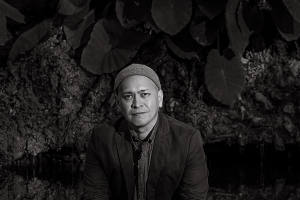

Focusing on the Man Who Captured JFK Steele Burrow ’13 leaned into his liberal arts education to create his first documentary, “Capturing Kennedy,” which premieres this weekend at the Boston Film Festival.
During the day, Steele Burrow ’13 works in Washington, D.C., in policy research, but at night and on the weekends for the last four years he turned into a documentary filmmaker. Burrow devoted his “off” hours to Jacques Lowe, the official photographer for John F. Kennedy, from the early days of his presidential campaign to his time in the Oval Office. Burrow’s documentary on Lowe, “Capturing Kennedy,” will debut at the 40th Boston Film Festival, which runs Sept. 19-23.
As a politics major at Washington and Lee University, Burrow took full advantage of the liberal arts education. He was involved in the Executive Committee as a class representative for several years before serving as president his senior year; he wrote for the Ring-tum Phi; he explored with the Outing Club; he was involved with his fraternity, Lambda Chi; and he took many classes — from journalism to art — outside his major. Taking from those experiences, he harnessed the ability to explore the arts within politics with his first documentary.
Can you describe the origins of your passion for photography and filmmaking?
I first became interested in photography in high school and continued that through my time at W&L, where I used the curriculum to take art and journalism classes along with my politics major. This project can actually be directly tied back to my earliest interest in documentaries, which began during a Spring Term course on documentary filmmaking at W&L, called Cross-Cultural Documentary Filmmaking.
How did you find W&L?
I found W&L as part of my college search my junior year of high school. There were a number of alumni from my high school in Texas who were at W&L at the time and could not speak highly enough of their decision. I still remember driving over the Blue Ridge Parkway with my dad and into Lexington during that high school college tour. From there, my heart was set, and I was fortunate to get into W&L early decision.
Was photography something you pursued at W&L?
I did, both formally and informally. When I was visiting colleges in high school, I was really impressed W&L still maintained a traditional film darkroom. In courses, I took several photo classes that combined darkroom work as well as art history in addition to the Spring Term class on documentaries. Outside the classroom, I worked regularly as a photographer for the Ring-tum Phi and a handful of other campus publications. One of the best opportunities I had at W&L was the chance to spend a summer working in Asia on a Johnson Opportunity Grant, where I used my photography interests to help a nonprofit in India build out its communications and fundraising resources.
How did you take advantage of the liberal arts education while in Lexington, and how has it impacted you in the years since?
At W&L, I majored in global politics but tried to take full advantage of the liberal arts opportunities by taking courses in history, economics, journalism and art. The value of “learning how to learn” that a number of my W&L professors emphasized could not have been more true for this project.
How did you stumble onto this project?
A friend had an amazing collection of Jacques Lowe prints, but I didn’t realize until a conversation during the COVID pandemic that he had shot a number of interviews with Lowe before Lowe passed away in 2001. Very few people had ever seen the tapes, but when I had a chance to watch them, I knew that they were a historical treasure that needed to be shared. I worked really closely with the collector throughout the process, and the whole project was possible because of these remarkable stories he captured on tape with Jacques nearly 25 years ago.
What was the hook that got you particularly interested in Jacques Lowe?
Lowe’s story touches upon so many pivotal times in history, from World War II to the rise of JFK and later the tragedies of 9/11. That alone made it a compelling story, but there were the added layers of him largely being unknown despite the wide reach of his work, along with the untold story of a close friend of his who preserved much of his work after the loss of his negatives.
Had you done much documentary filmmaking? How is it similar and different to still photography?
I had previously produced a number of short “mini-docs” and short films primarily for NGOs to highlight their work and partners overseas. Those built up my understanding of the full filmmaking process from audio to editing and post-production, but it was still a big learning curve to take on a project of this size.
As a photographer yourself, how would you describe Jacques Lowe’s photographs, and what makes them so singular in their portrayals of a well-documented family?
Lowe had a remarkable eye for composition and light. He never used a flash or artificial lighting, which I think helped create such a distinctive and natural style to his work. What really differentiated him though was his access, which spoke to his ability to build incredibly close relationships with his subjects and build their trust in his ability to uniquely and fairly capture history as it unfolded before him.
What was the process like for creating “Capturing Kennedy”? How long did it take? What were some surprises along the way?
For my part, this was a four-year process that began as an idea bounced around during COVID. At that time, I planned for it to be a short film, but the story had so many layers, and there was so much content to work with, that I discovered pretty quickly it needed to be told in a longer format.
What was your favorite memory or moment during this experience?
One of the more unexpected moments that made me realize the film concept had potential was getting an interview with a Kennedy biographer and historian at Harvard’s Kennedy School. I sent him a cold email outlining the film idea and why we thought he would be a valuable addition, and, sure enough, he was happy to participate.
As someone with a history in politics while also pursuing the arts, how did this documentary combine all your passions? How did the liberal arts education at W&L play a part in that?
In a lot of ways, this project was the combination of all my personal interests, from photography to history to World War II and the Kennedy years. The filmmaking process also overlaps much more with a liberal arts education than I think a lot of people realize. Beyond the obvious creative elements, you have to be comfortable dealing with a whole range of other elements that touch on legal, business, marketing, journalism, technical and historical issues, to name just a few. The barrier to entry to make a documentary is probably lower than it has ever been thanks to digital cameras and editing technology, but you still have to be comfortable quickly learning a whole range of new skills and programs. My liberal arts education at W&L was pivotal for that.
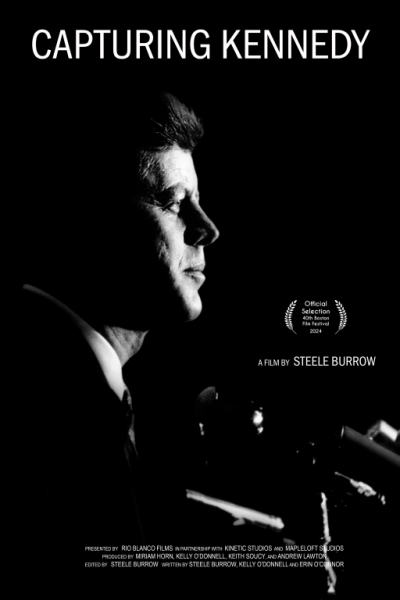 Steele Burrow’s documentary, “Capturing Kennedy,” premieres at the Boston Film Festival.
Steele Burrow’s documentary, “Capturing Kennedy,” premieres at the Boston Film Festival.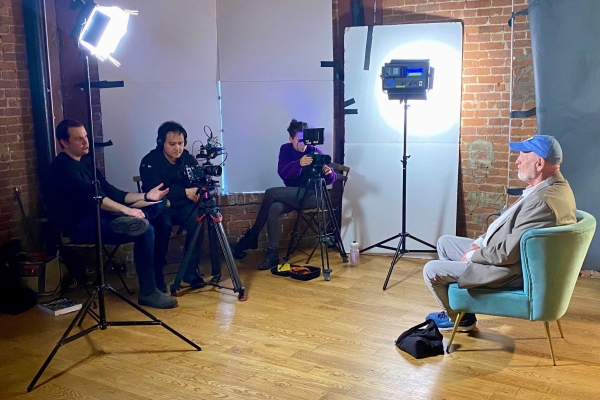 Steele Burrow ’13 (far left) spent four years’ worth of weekends and after-work hours working on his debut documentary, “Capturing Kennedy.”
Steele Burrow ’13 (far left) spent four years’ worth of weekends and after-work hours working on his debut documentary, “Capturing Kennedy.”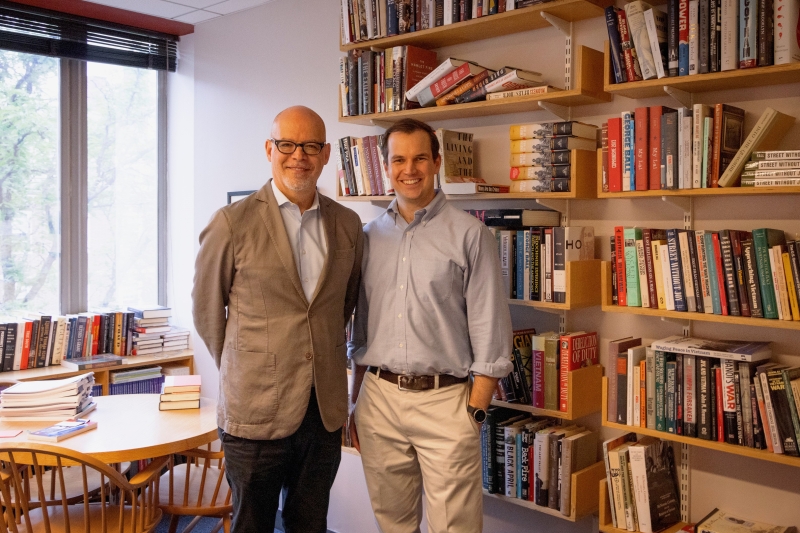 While working on his documentary, “Capturing Kennedy,” Steele Burrow (right) interviewed Fred Logevall, who wrote, “JFK: Coming of Age in the American Century.”
While working on his documentary, “Capturing Kennedy,” Steele Burrow (right) interviewed Fred Logevall, who wrote, “JFK: Coming of Age in the American Century.”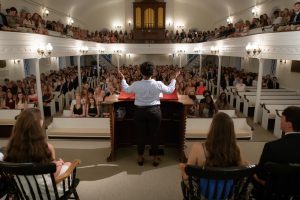

You must be logged in to post a comment.